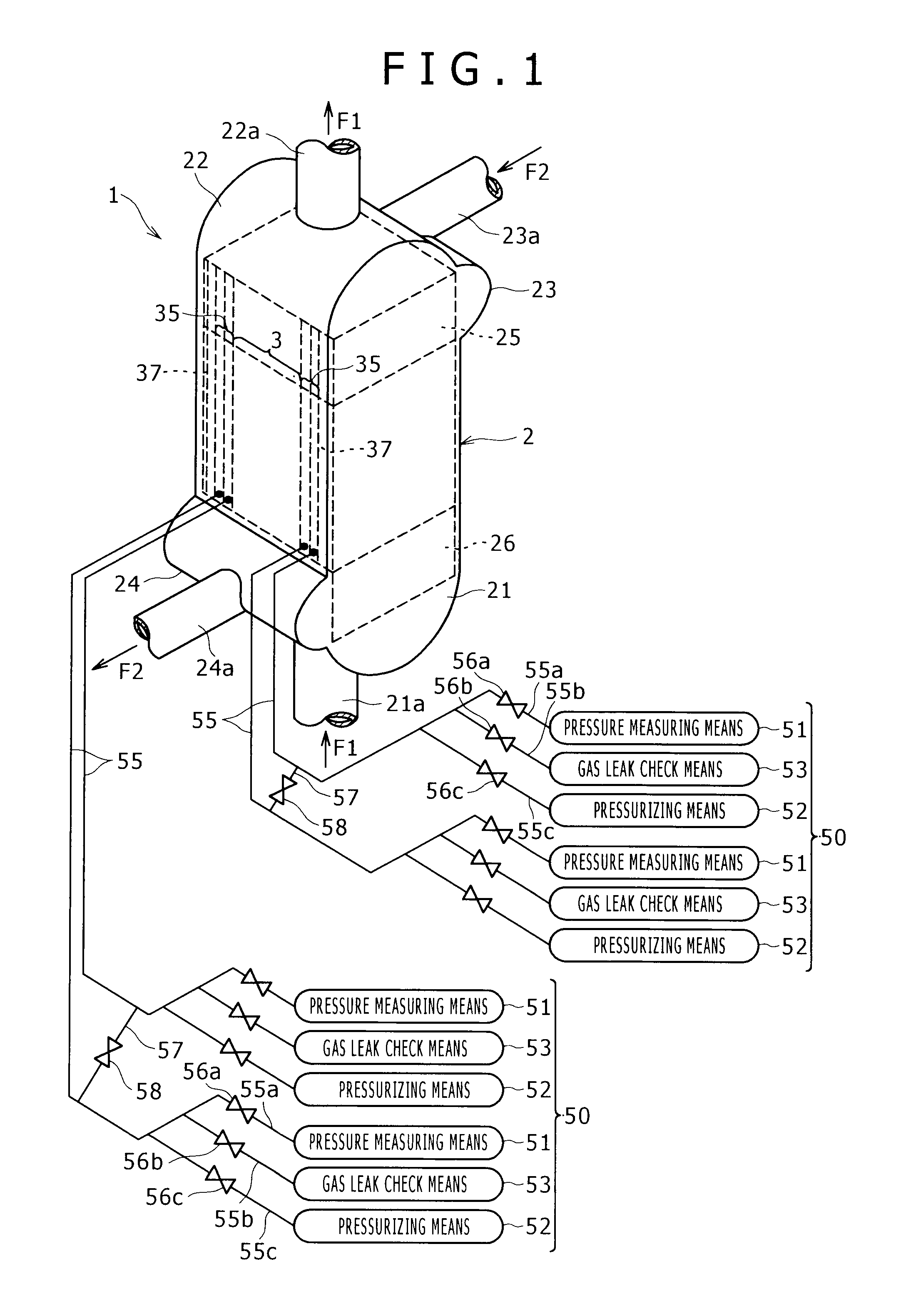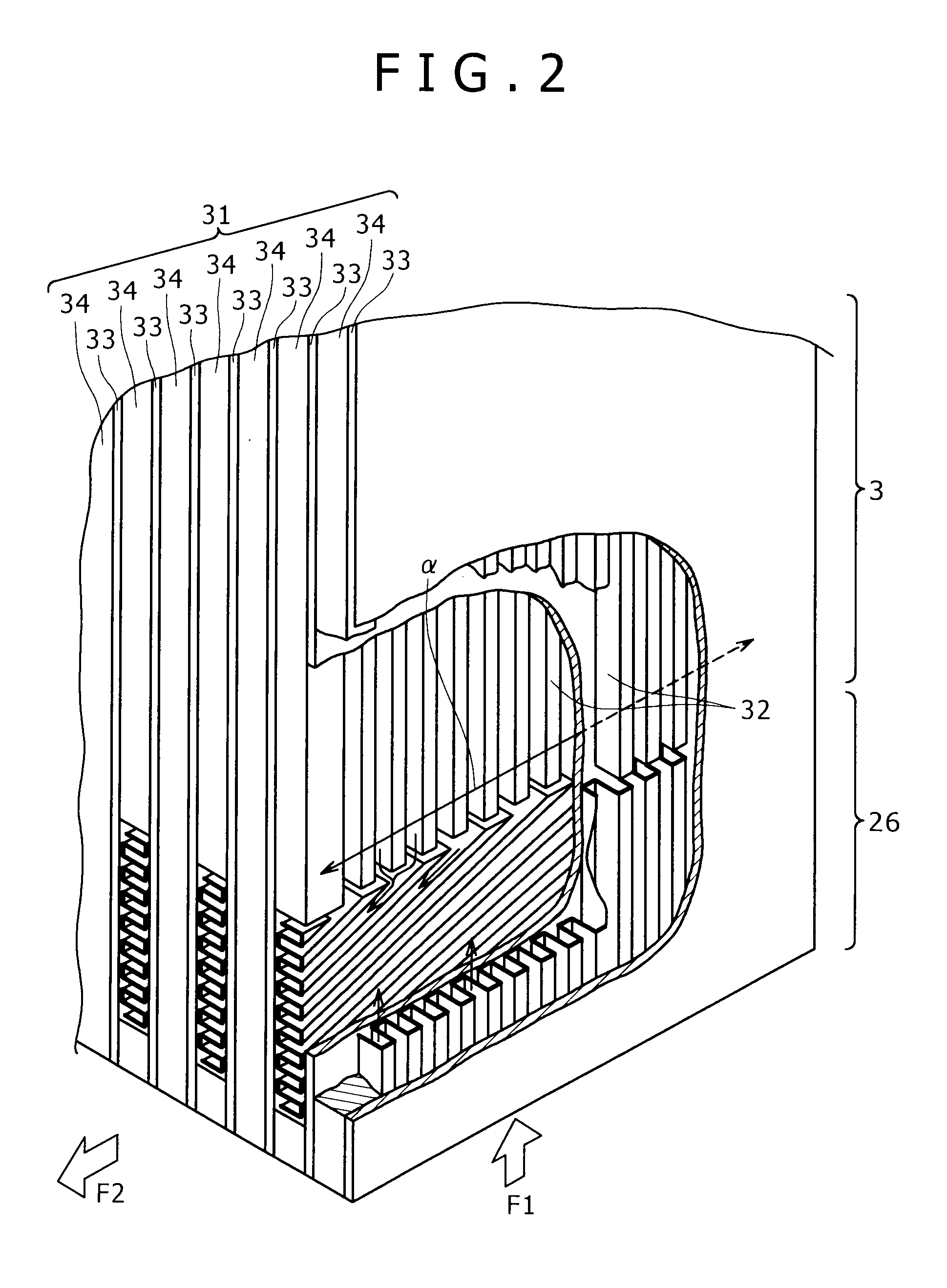Plate fin heat exchanger
a heat exchanger and fin technology, applied in indirect heat exchangers, laminated elements, lighting and heating apparatus, etc., can solve the problems of heat conductivity reduction, heat exchange efficiency of the heat exchanger part, and heat conductivity of the fin plate b, so as to prevent further leakage, reduce the size and weight of the heat exchanger, and be easy to detect. and sure
- Summary
- Abstract
- Description
- Claims
- Application Information
AI Technical Summary
Benefits of technology
Problems solved by technology
Method used
Image
Examples
Embodiment Construction
[0031]One preferred embodiment of the present invention will be described in reference to the accompanying drawings.
[0032]A plate fin heat exchanger (hereinafter also simply referred to as “heat exchanger”) according to the present invention is adapted to perform heat exchange between a first fluid and a second fluid both flowing therein. More specifically, as shown in FIGS. 1 to 3, a heat exchanger 1 includes a vertical box-shaped casing 2; and a heat exchange part 3 provided within the center of the casing 2, in which a first flow passage 30a for carrying a first fluid F1 and a second flow passage 30b for carrying a second fluid F2 are alternately arranged.
[0033]The casing 2 includes a bottom header 21 and a top header 22 for the first fluid provided at the bottom and at the top thereof respectively. The casing 2 further includes an upside header 23 and a downside header 24 for the second fluid provided at an upside and a downside portions thereof respectively. A first fluid inlet...
PUM
 Login to View More
Login to View More Abstract
Description
Claims
Application Information
 Login to View More
Login to View More - R&D
- Intellectual Property
- Life Sciences
- Materials
- Tech Scout
- Unparalleled Data Quality
- Higher Quality Content
- 60% Fewer Hallucinations
Browse by: Latest US Patents, China's latest patents, Technical Efficacy Thesaurus, Application Domain, Technology Topic, Popular Technical Reports.
© 2025 PatSnap. All rights reserved.Legal|Privacy policy|Modern Slavery Act Transparency Statement|Sitemap|About US| Contact US: help@patsnap.com



